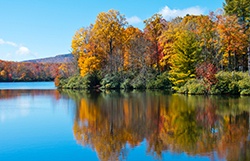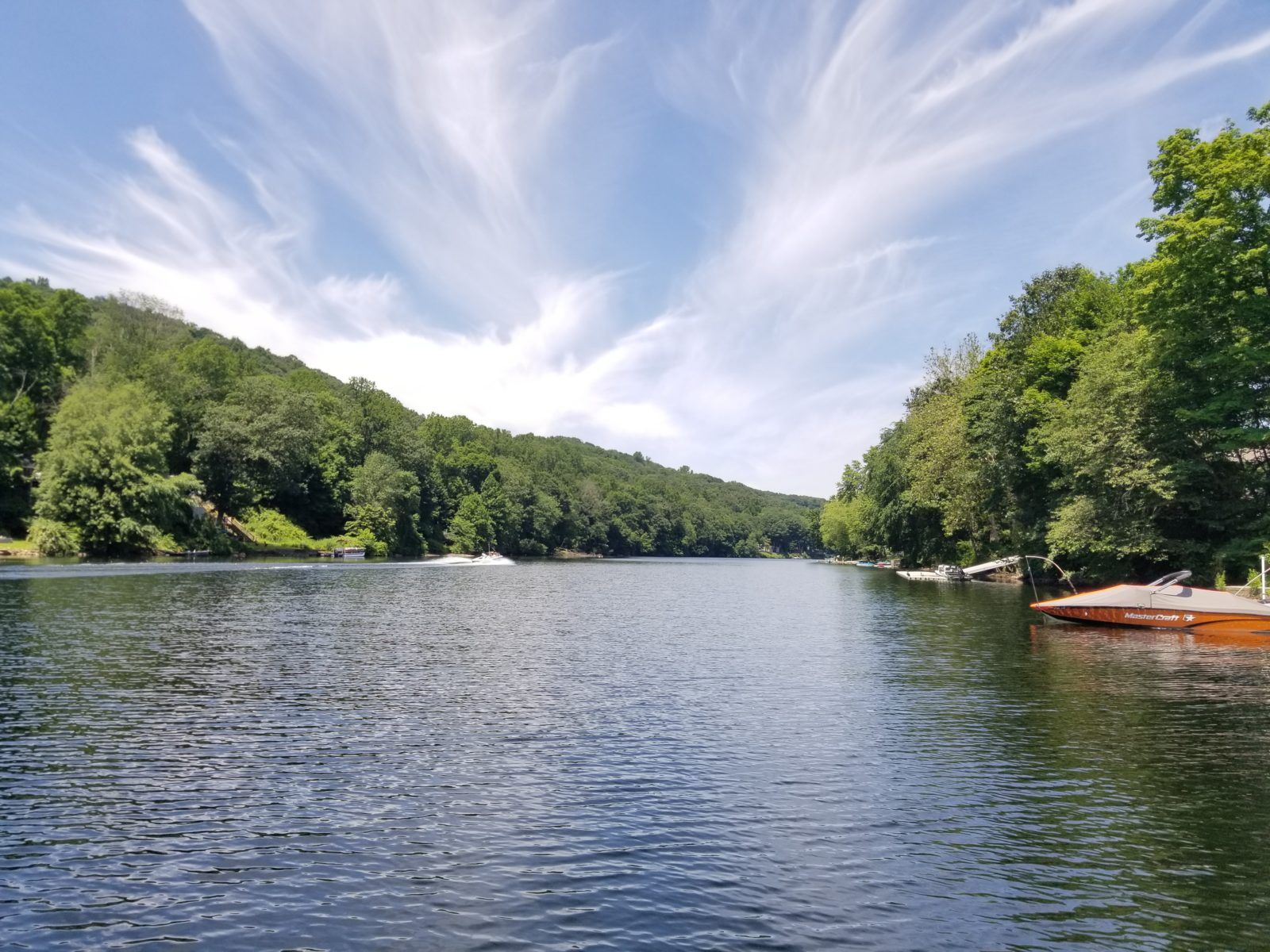Best Management Practices for a Healthy Pond this Fall
October 15th, 2015
Written by Industry Expert, Trent Nelson, Aquatic Specialist
 Fall is a wonderful time of the year, regardless of your geographic location; the cooler temperatures, changing of the leaves, football, and the first frost bring people outdoors to enjoy nature’s beauty. While fall festivities can keep us all busy, it is important that we do not forget a few key steps to ensure your pond is in top shape heading into the winter.
Fall is a wonderful time of the year, regardless of your geographic location; the cooler temperatures, changing of the leaves, football, and the first frost bring people outdoors to enjoy nature’s beauty. While fall festivities can keep us all busy, it is important that we do not forget a few key steps to ensure your pond is in top shape heading into the winter.
One of the most obvious changes in the fall is the leaves, and while Mother Nature tends to offer vibrant fall colors, it is important to remember that those changing leaves will soon fall to the ground and be deposited into your pond or stormwater facility. Leaves and other organic landscape matter should not be blown or dumped into your waterbody because this accumulation of organic matter can lead to a high nutrient load, resulting in pond algae blooms. The leaves decompose and release nutrients, as well as decrease the overall pond depths or holding capacity due to this organic sediment buildup. Completely preventing leaf deposits from entering your pond is nearly impossible and is predominantly dependent on the amount of deciduous trees surrounding your pond; however, care should also be taken to make sure leaf litter doesn’t accumulate and clog the outlet structure.
Outlet structures come in all shapes and sizes and help control water levels, including the emergency release of excessive stormwater during high flow events. Outlet structures should be inspected visually each week or at least during times of heavy leaf drop and after extraordinary rain events. Buildup of leaf and other organic material should be cleared and deposited away from the waterbody. The addition of biological products that increase or boost the beneficial microbial bacteria naturally found in ponds can ultimately aid in leaf litter and other organic bottom sediment reduction. However, these products generally should be applied during warmer months when water temperatures are warm enough to support the proliferation of these bacteria.
 Fall is also the ideal time to renovate cool season turf around your home, commercial sites and common areas of subdivisions. Cool season turf, such as tall fescue, established from seed in the fall is ideal, allowing the root system to fully develop before the next summer’s hot and dry season, which creates a lot of stress for cool season grasses. Therefore, it is typically recommended that cool season turf be aerated (plugged), seeded, and fertilized in the fall. Making sure that proper fertilizer techniques are used and all bare ground is covered with wheat straw, or other mulch material or erosion control matting, is critical to avoid or reduce the amount of nutrients washing into a pond. In areas where turf is surrounding a waterbody and is commonly fertilized, it is recommended to leave an untreated vegetative buffer of 5-15 feet, depending on the severity of slope leading to the water’s edge. The buffer will help reduce excessive amounts of nutrients that are associated with severe and frequent algae blooms and significant water quality degradation from entering the pond. An excessive nutrient load is one of the leading causes of algae blooms in aquatic ecosystems. With proper care, both your turf and waterbody will benefit from proper fall turf renovation, stabilization, and fertilization techniques.
Fall is also the ideal time to renovate cool season turf around your home, commercial sites and common areas of subdivisions. Cool season turf, such as tall fescue, established from seed in the fall is ideal, allowing the root system to fully develop before the next summer’s hot and dry season, which creates a lot of stress for cool season grasses. Therefore, it is typically recommended that cool season turf be aerated (plugged), seeded, and fertilized in the fall. Making sure that proper fertilizer techniques are used and all bare ground is covered with wheat straw, or other mulch material or erosion control matting, is critical to avoid or reduce the amount of nutrients washing into a pond. In areas where turf is surrounding a waterbody and is commonly fertilized, it is recommended to leave an untreated vegetative buffer of 5-15 feet, depending on the severity of slope leading to the water’s edge. The buffer will help reduce excessive amounts of nutrients that are associated with severe and frequent algae blooms and significant water quality degradation from entering the pond. An excessive nutrient load is one of the leading causes of algae blooms in aquatic ecosystems. With proper care, both your turf and waterbody will benefit from proper fall turf renovation, stabilization, and fertilization techniques.
Floating fountains can be a key component to a balanced aquatic ecosystem by providing adequate aeration and are also an aesthetically pleasing addition to your lake or pond. During the fall, leaves continually clog fountains, thus reducing their aeration efficacy to the waterbody. If you have a floating fountain and it appears to have an obstructed or low pattern, it may be clogged with leaf or other organic debris. Unclogging the fountain will ensure that it is functioning properly and therefore optimize the aeration benefit and your investment.
The fall is also a good time to start thinking about winter maintenance for your fountain depending on where you live. Oil and seal changes to the fountain motor every three to five years can significantly extend the life of your unit. In northern locations, where ponds and small lakes completely freeze, it is often times recommended to remove and store the fountain during the harsh winter months.
Fall can also be a good time to begin thinking of any improvements to your pond that can be completed during the winter season. Repairing docks, increasing fish habitat, trimming buffers, clearing woody growth on dams, reinforcing riprap areas, etc., are recommended and should be addressed annually, if possible. The winter months are an excellent time to complete these structural repairs and improvements.
The fall is a prime time to enjoy the outdoors and your waterbody without the summer heat, nagging bugs, and ubiquitous threat of an afternoon thunder storm ruining your evening. The photo opportunities made available by vibrant fall foliage, cool misty mornings, and relaxing family gatherings are unmatched by any other season. Including these best management practices in your ponds and surrounding areas’ annual management can create a picturesque, healthy, and balanced ecosystem for you to enjoy.
Find Your Water Quality Solution
Contact the experts at 888-480-5253 for all of your lake, pond and fisheries management needs.
Trent Nelson is an Aquatic Ecologist with SOLitude Lake Management. Since 1998, SOLitude Lake Management has been committed to providing full service lake and pond management services that improve water quality, preserve natural resources, and reduce our environmental footprint. Lake, pond and fisheries management services, consulting, and aquatic products are available nationwide. Learn more about SOLitude Lake Management and purchase products at www.solitudelakemanagement.com.










